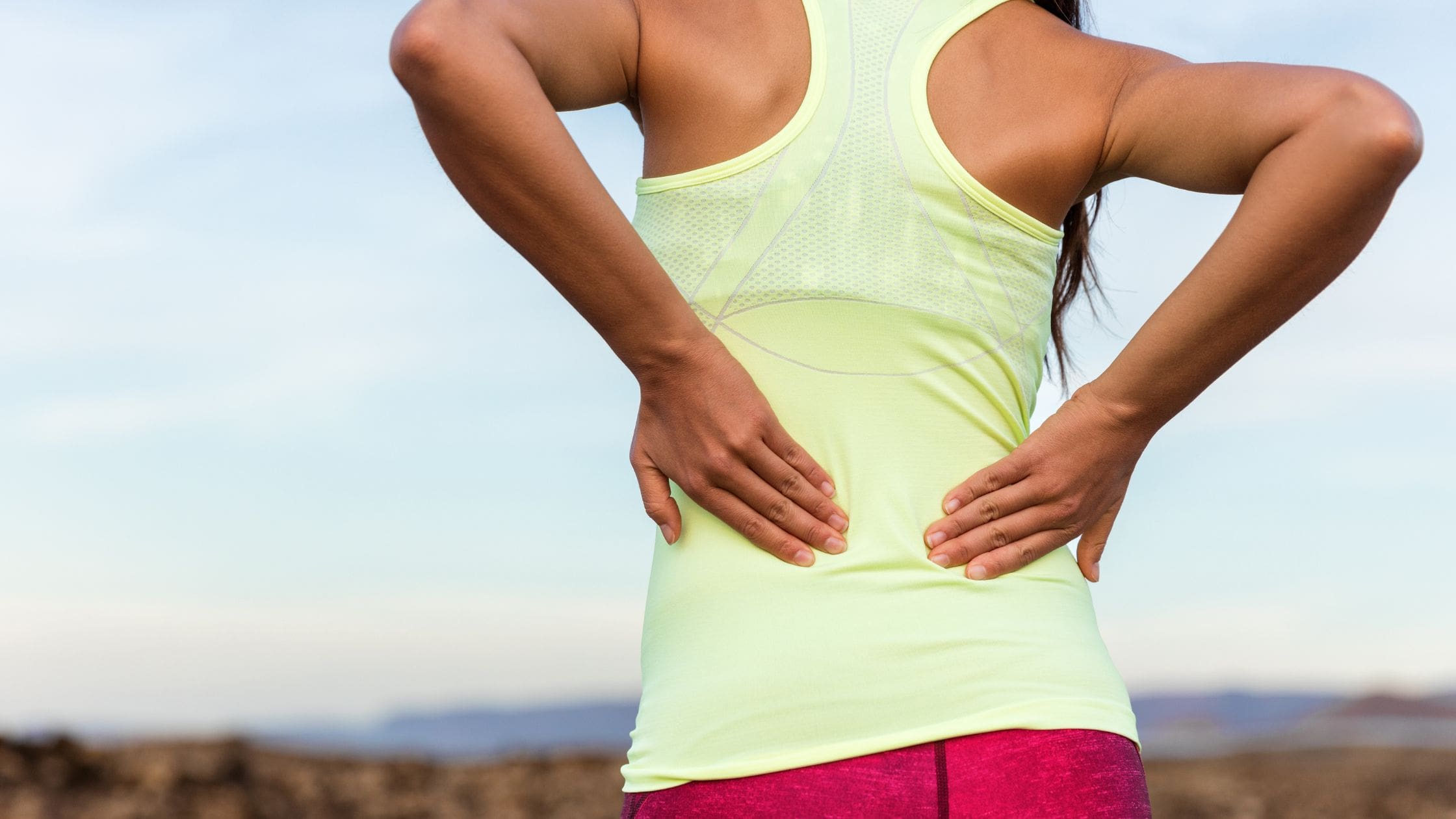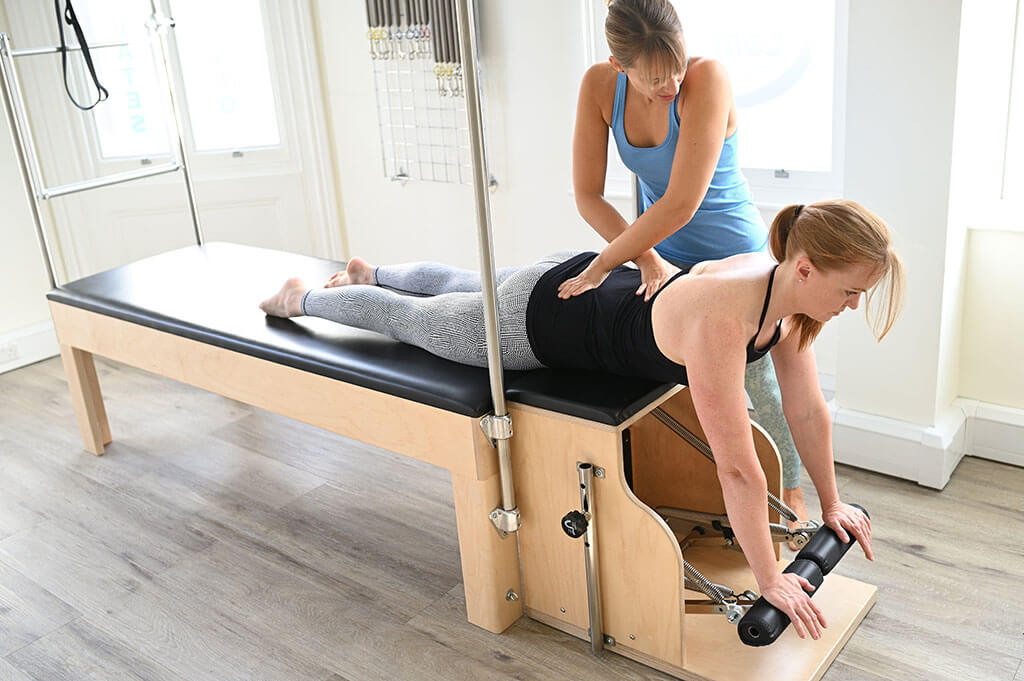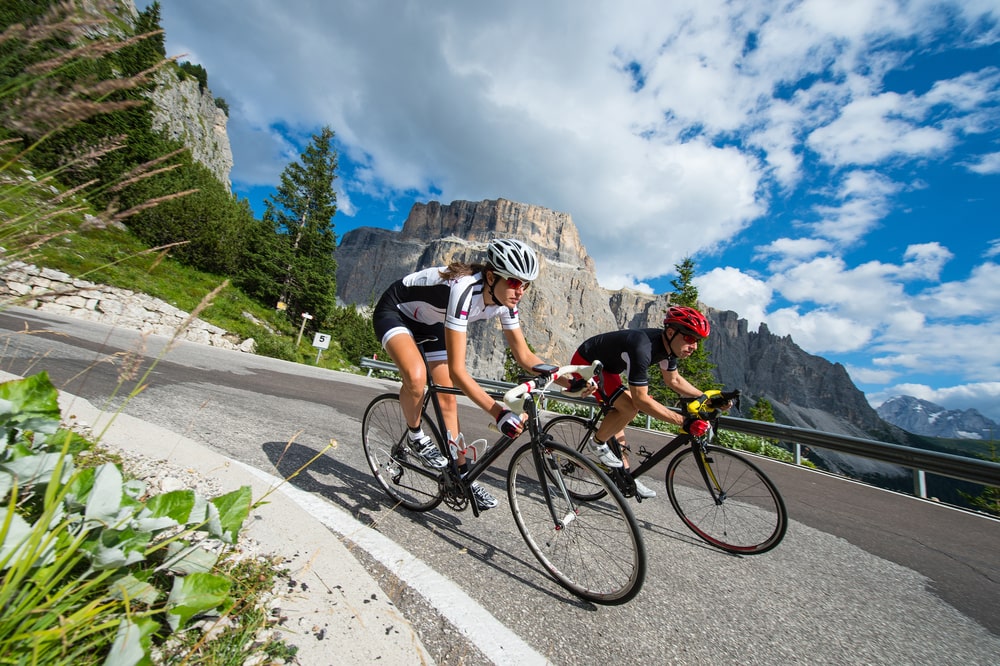When thinking about balance and what it is, a lot of people imagine standing on one leg with their eyes closed, tightrope walking across high buildings or someone falling over.
According to the NHS around 1 in 3 adults over the age of 65 who live at home will fall at least once per year. With an ageing population this obviously presents some problems.
In Polestar, we have six different principles that guide our practice and one of these is alignment and weightbearing of the limbs. This basically means that if you line up the skeleton to where it is designed to be, things will naturally work efficiently.
We are going to look at falls and one of the factors that is really easy for you to change and work on in the comfort of your own home: alignment and weight bearing of your lower limb and how this can improve your balance. We will also tell you how Pilates can help your balance and give you some easy and simple home exercises to help balance.
Why do I fall over?
There are lots of reasons why people fall. You can slip on a wet floor, trip over a rug, or overreach for something. However, you can also fall if your senses are impaired. For example, because of an inner ear problem or difficulty with your eyes and vision. You could also have low blood pressure or heart problems which put you more at risk. These can lead to feelings of dizziness or fainting.
If you are worried about any of these things you should go to your GP for help and advice. There is a lot of help and support available for these and your GP will carry out tests if needed to determine the cause of the problem.
It can also be a musculoskeletal issue. We have a sense called proprioception which is an awareness of where we are in space. It is how you know where your foot is without having to look at it. We are getting constant messages back from the joints and soft tissues telling our spinal cord and brain what position we are in and how we are moving.
If we have had injuries to our joints or the muscles, tendons, or ligaments this sense can be affected. If we do not get such good quality information coming in it is difficult to maintain our balance. Equally if we do not have good reactions and strength in the muscles to respond we are also more likely to lose balance.
This is partly why good rehab after injuries is so important. It reduced the risk of you getting re-injured or causing another injury.
How do I know whether I have good balance?
Having good balance means that you can control your body’s position whether you are moving or simply standing still. Control is what Pilates is infamous for and was even originally named ‘Contrology’ by Joseph Pilates.
Lots of people think that having good balance means that you can stand on one leg for a long time with your eyes closed, or on a wobbly surface and not fall over. Although these challenge your body’s ability to control itself, good balance can simply mean your ability to walk without staggering or holding onto something, going up and down stairs without tripping, bending over or getting out of a chair without falling.
If you can do all these things with no problems, chances are your balance is pretty good and you don’t need to worry! However, if you are reading this thinking that you regularly stumble down the street, let alone being able to walk between to skyscrapers, then you may need to consider how to improve your balance.
Try taking a simple test of your balance. Here are three ways you can test your balance.
- Can you stand with both feet together so that they touch and maintain your balance easily for 1 minute?
- Can you stand on one leg easily for 30 seconds?
- Can you stand on one leg easily for 30 seconds with your eyes closed?
If you are fully fit and healthy with no contributing medical problems, you should be able to do all of these.
How can I improve my balance?

Although we are not delving into them, we feel it is important to say first – get regular eye and hearing tests! These are simple and easy prevention techniques so use them and do not use the phrase, “I’m too busy”as an excuse!
Then there is the next easiest part, staying physically active. There are lots of guidelines out there about how much exercise to do. However, the general rule is 150 minutes per week over a minimum of three days. Variety is key and the best part about this, is that you can do it at home as well.
Exercise can be everything from gardening to picking up your small grandkids or cleaning your home and walking, so do not think that you need to get in the gym if that fills you with dread.
Pilates Balance Exercises
There are lots of great YouTube classes out there, including the free ‘Go4Life’ by the National Institute on Ageing, you just need to pick your favourite. You can also try mat Pilates balance exercises which are easily accessible, including our very own online group classes.
Pilates at home is also a great way to improve your balance. How many times have you heard people say after coming out of a Pilates class “I feel so much taller”, “I feel so much more connected to my core”, “I found muscles I never knew I had”. Pilates is famous for improving your posture and working all those small stability muscles which help you balance.
There are plenty of people around who will tell you that your pelvis is not aligned, your legs are different lengths, or your knees point too far in or out. This may be true, but for some people this is also normal. Often, we have to work with the body we have and there can still be improvements made even when our body is a little asymmetrical.
When doing the exercises below, or any exercise, remember these simple tips:
- Allow things to move and do not just grip onto muscles (if you are doing this you may notice you are holding your breath!).
- Your hip joint is in the middle of your hip crease and this should be in line with the middle of the knee and second toe.
- Try to keep your kneecap facing forwards.
- Keep your weight in the middle of your foot.
If you do this, then your body can transfer the force of the movement well which allows you to react quicker if you feel unsteady.
Trying simple exercises that you can find in our video database such as;
These can help you build strength and can be done at home with limited equipment. Remember to focus on your technique and take your time with them to really get them right.
To challenge your balance, try a standing roll down, heel to toe walking, sideways walking, standing on one leg or a high step up. Balance challenges should always be difficult and feel like you might wobble. By challenging the body this way, you will see improvements.
How bad does my balance need to be before I ask for help?
Ask yourself a few simple questions. Do you feel unsteady? Do you feel like you are moving even if you are standing still? Do you regularly trip, stumble or fall? Are you experiencing blurry vision or feel like you may faint? If the answer is yes, then go and see your GP. You may find that you have a medical reason for your poor balance.
At Complete Pilates our one to one sessions are perfect for addressing your individual needs including balance. Let us find our whether your balance needs improving and set an individual program for you and your needs.
Get in touch now to book a session
Education is key:
These blogs are designed to give information to everyone, however, it is important to remember that everyone is different! If you have not seen one of our therapists and have any questions about injuries, what you have read or whether this may be useful to you, please just ask. We are more than happy to help anyone and point you in the right direction. Our biggest belief is that education is key. The more you understand about your injury, illness and movement, the more you are likely to improve.





